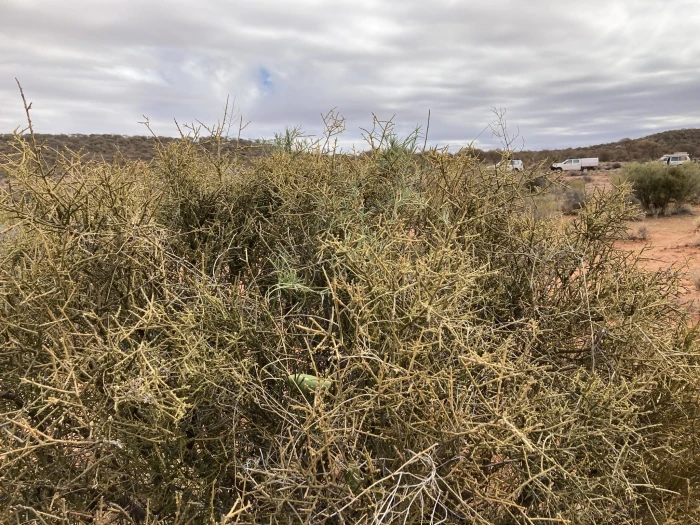Bush Banana
(Leichhardtia australis)
Bush Banana (Leichhardtia australis)
/
/

Thomas Mesaglio
CC BY 4.0
Image By:
Thomas Mesaglio
Recorded By:
Copyright:
CC BY 4.0
Copyright Notice:
Photo by: Thomas Mesaglio | License Type: CC BY 4.0 | License URL: http://creativecommons.org/licenses/by/4.0/ | Rights Holder: Thomas Mesaglio | Publisher: iNaturalist | Date Created: 2022-08-17T12:20:15-07:00 |

























Estimated Native Range
Climate Requirements for Fort Worth, Texas
| This Plant | Your Site | Plant Suitability for Your Location | ||
|---|---|---|---|---|
| • Precipitation | 5" - 68" | 33" | Your precipitation may be too high for this plant. | Too high |
| • High Temp. | 74°F - 106°F | 97°F | Your summer temperatures are normal for this plant. | Excellent |
| • Low Temp. | 35°F - 69°F | 33°F | Your winter temperatures may be too cold for this plant | Too cold |
This plant may not grow well at your location - your precipitation is too high.
Summary
Leichhardtia australis, commonly known as bush banana or silky pear, is a perennial vine native to the arid and semi-arid regions of Australia. It thrives in open woodlands and desert margins, often climbing on other vegetation for support. This plant is well-adapted to its native habitat, which includes rocky soils and areas with sporadic rainfall. It typically exhibits a twining growth habit and can reach lengths of several meters when supported.
Bush banana is notable for its slender, elongated fruits that resemble a banana, hence the name. The fruit is covered in fine, silky hairs, giving rise to the alternative common name, silky pear. The plant also produces attractive yellow flowers during the warmer months, which can add a splash of color to the landscape. In cultivation, bush banana is valued for its unique appearance and its edible fruit, which is an important food source for Indigenous Australians. It is used in traditional bush tucker gardens and can be grown as an ornamental vine in suitable climates. Cultivation requires well-drained soil, minimal water once established, and a position in full sun to part shade. It is relatively low-maintenance but may need support to achieve its full potential as a climber.CC BY-SA 4.0
Bush banana is notable for its slender, elongated fruits that resemble a banana, hence the name. The fruit is covered in fine, silky hairs, giving rise to the alternative common name, silky pear. The plant also produces attractive yellow flowers during the warmer months, which can add a splash of color to the landscape. In cultivation, bush banana is valued for its unique appearance and its edible fruit, which is an important food source for Indigenous Australians. It is used in traditional bush tucker gardens and can be grown as an ornamental vine in suitable climates. Cultivation requires well-drained soil, minimal water once established, and a position in full sun to part shade. It is relatively low-maintenance but may need support to achieve its full potential as a climber.CC BY-SA 4.0
Plant Description
- Plant Type: Vines
- Height: 10-15 feet
- Width: 10-15 feet
- Growth Rate: Moderate
- Flower Color: Yellow
- Flowering Season: Summer
- Leaf Retention: Evergreen
Growth Requirements
- Sun: Full Sun, Part Shade
- Water: Low
- Drainage: Fast, Medium
Common Uses
Drought Tolerant, Edible*Disclaimer: Easyscape's listed plant edibility is for informational use. Always verify the safety and proper identification of any plant before consumption.
Natural Habitat
Native to arid and semi-arid regions of Australia, particularly in open woodlands and desert margins
Other Names
Common Names: Desert Gourd , Bush Pumpkin
Scientific Names: Leichhardtia australis , Leichardtia australis , Marsdenia australis , Marsdenia leichhardtiana
GBIF Accepted Name: Leichhardtia australis